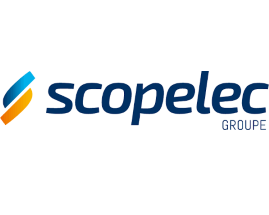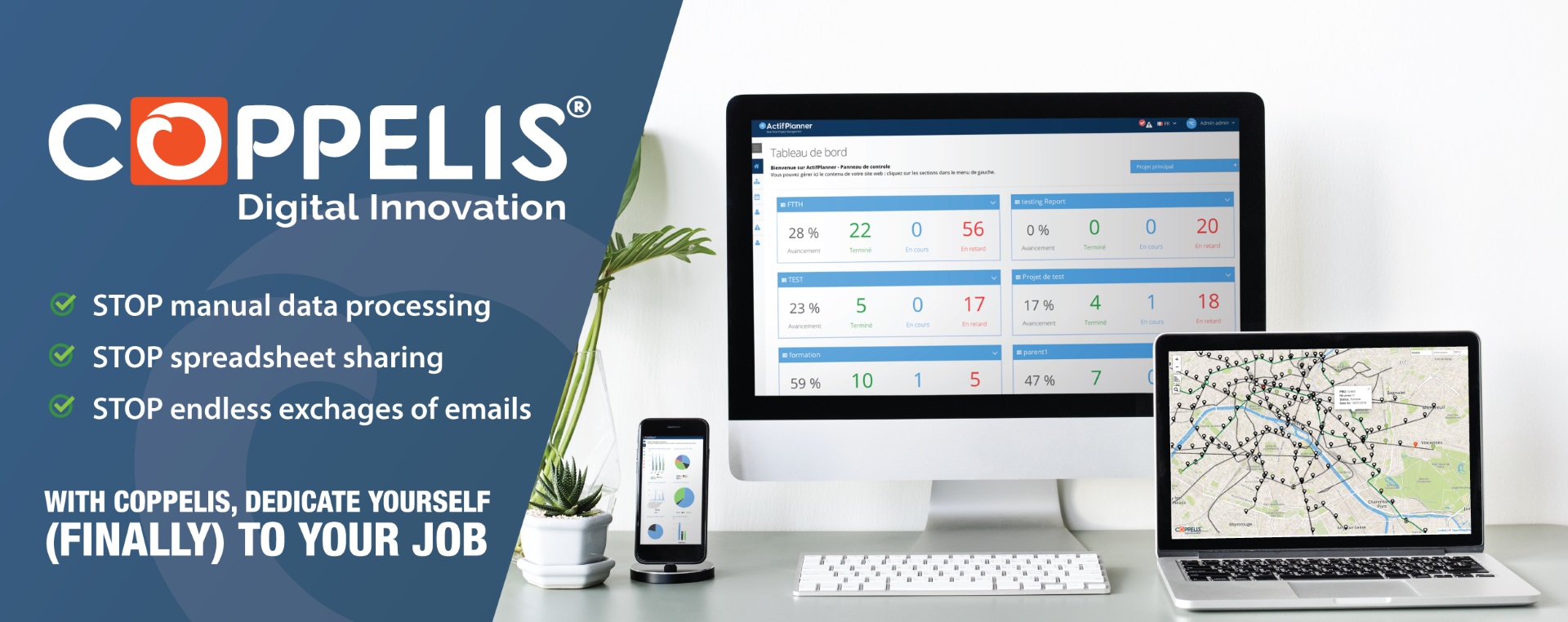
WHAT WE DO
COPPELIS helps you in the digital transformation
and the optimisation of your processes.
We offer easy to use and adaptable business solutions allowing activities follow-up and decision-making.
Time optimisation
Auto processing
Collaboration
Mobility
Real time update
%
Increase productivity
Quality Control
Mobile quality inspection
Reparation ticketing
Preventive maintenance
SLA automation
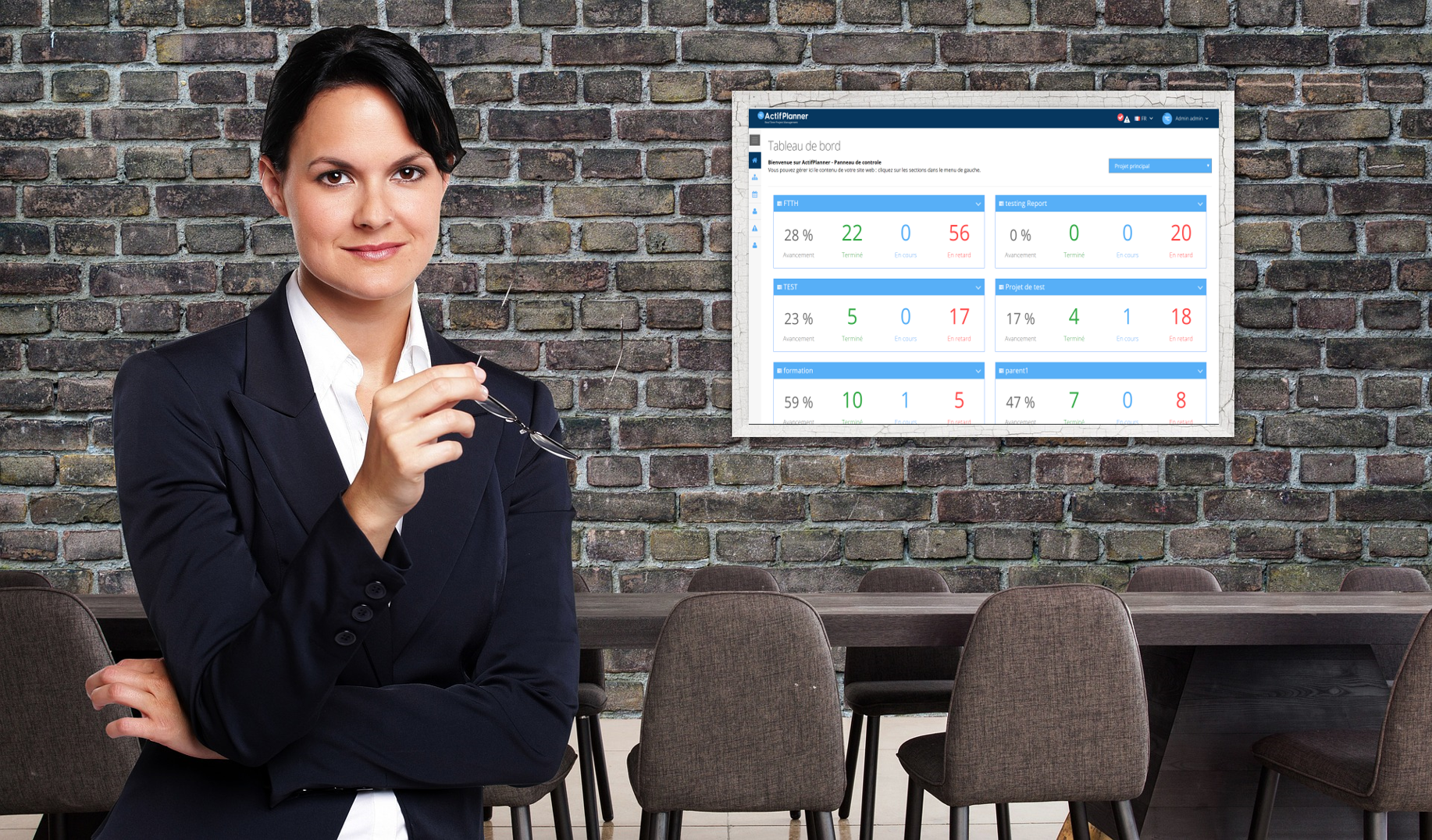
How to respect your commitments?
How to guarantee the quality of your services ?
How to increase the performance of your activity ?
How to satisfy your customers ?

MUNICIPAL GOVERNMENT
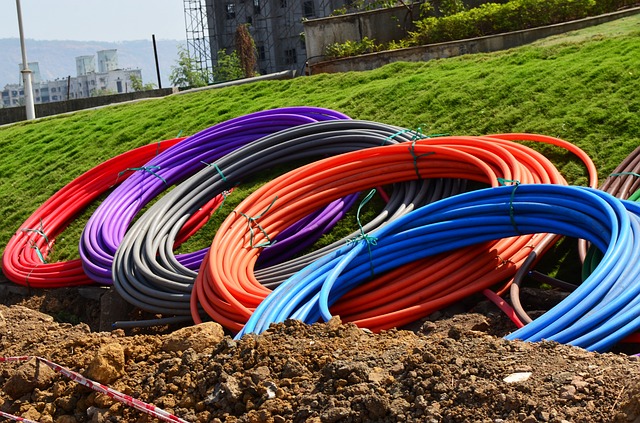
TELECOM

CONSTRUCTION
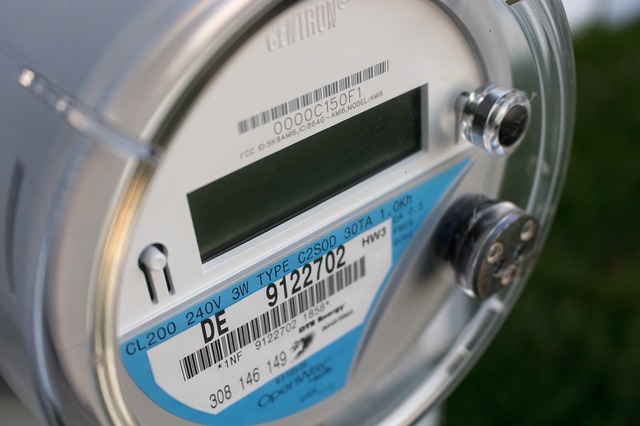
ENERGY

PHARMA

FINANCE
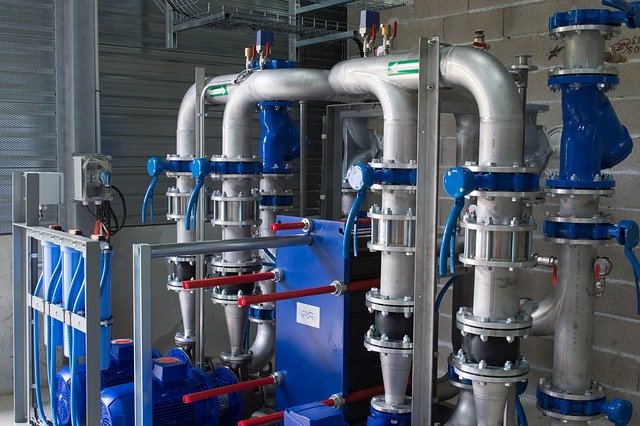
INDUSTRY

REAL ESTAT
Your business is unique … Our solutions too.
Try our products for free
Our products are designed to be even more effective combined together!
Get a free 15-day offer to try as many Coppelis solutions as you want.
They trusted us









